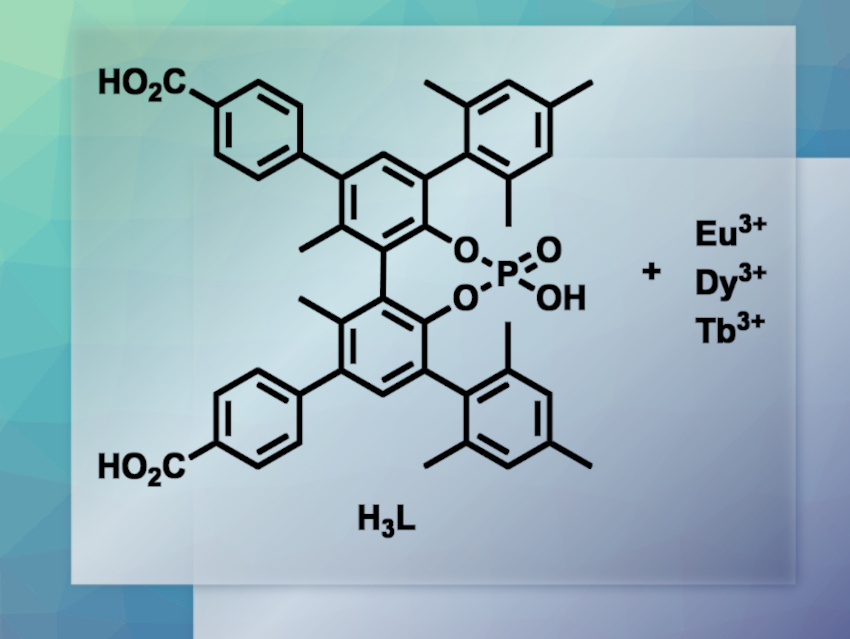Metal–organic frameworks (MOFs) are crystalline porous materials composed of metal centers and organic linkers. They can be useful, e.g., in catalysis, gas separation, or sensing. Two-dimensional MOF nanosheets are interesting due to their more easily accessible active sites and faster diffusion, as well as their improved mechanical flexibility. MOF nanosheets with ordered pores could, for example, be prepared via the exfoliation of three-dimensional, layered MOFs, similar to how graphene is made from layered graphite. However, such nanosheets are still challenging to make due to the limited availability of suitable layered 3D MOFs.
Yu Han, King Abdullah University of Science and Technology (KAUST), Thuwal, Saudi Arabia, Yong Cui, Shanghai Jiao Tong University, China, and colleagues have developed lanthanide(III)-based MOFs whose layers are stabilized by sterically demanding ligands. They then prepared single-crystalline ultrathin 2D nanosheets with intrinsic porosity by exfoliating these MOFs. The team first prepared a bulky, axially chiral ligand (H3L, pictured) in three steps from (R)- or (S)-6,6′-dimethyl-5,5′-di(4-methoxycarbonyl)phenyl-3,3′-diiodo-1,1′-biphenyl-2,2′-diol. Then they heated solutions of H3L and LnCl3·6H2O (Ln = Eu,Dy,Tb) in a mixture of N,N-dimethylformamide (DMF) and N,N-dimethylacetamide (DMA) at 100 °C to obtain the desired 3D MOFs of the type [H2NMe2]2[Ln2(HL)4].
The layers of these MOFs are held together by relatively weak van der Waals interactions. Thus, they can be easily exfoliated using solvent-assisted liquid sonication to give 2D porous nanosheets. The team used low-dose high-resolution transmission electron microscopy (HRTEM) to characterize the Eu-based nanosheets and found that the nanosheets have a pore size of 1.6 nm. According to the researchers, this is the first time that the framework of a chiral MOF has been directly observed by HRTEM. As an example for possible applications of these materials, the team prepared free-standing mixed-matrix membranes (MMMs) using the Eu-MOF nanosheets, which can be employed as a fluorescence-sensing platform for the detection of terpenes and terpenoids.
- Single-Crystalline Ultrathin 2D Porous Nanosheets of Chiral Metal–Organic Frameworks,
Yuhao Liu, Lingmei Liu, Xu Chen, Yan Liu, Yu Han, Yong Cui,
J. Am. Chem. Soc. 2021.
https://doi.org/10.1021/jacs.0c13005




